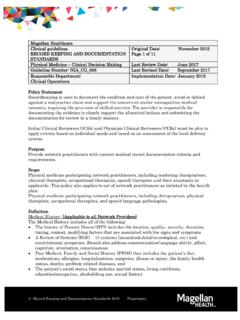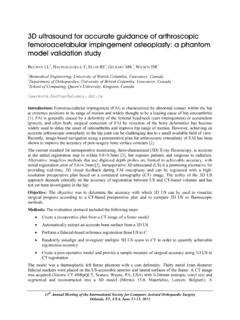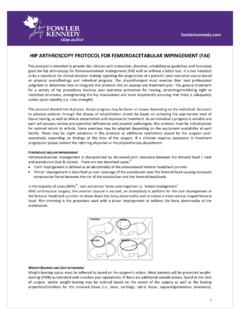Transcription of HIP ARTHROSCOPY & OPEN, NON- ARTHROPLASTY HIP …
1 National Imaging Associates, Inc. Clinical guidelines: HIP ARTHROSCOPY & open , NON- ARTHROPLASTY HIP REPAIR Original Date: November 2015 CPT CODES: 27130, S2118, 29860, 29861, 29862, 29863 Last Review Date: Guideline Number: NIA_CG_314 Last Revised Date: Responsible Department: Clinical Operations Implementation Date: January 2016 1 Hip ARTHROSCOPY & Other open Proprietary INTRODUCTION: This guideline describes the indications for, and surgical uses of ARTHROSCOPY in the hip as well as open , non- ARTHROPLASTY hip repair procedures. ARTHROSCOPY introduces a fiberoptic camera into the hip joint ( ARTHROSCOPY ) and surrounding extra-articular areas (endoscopy) through a small incision for diagnostic purposes. Other tools may then be introduced to remove, repair, or reconstruct intra-articular and extra-articular pathology.
2 Surgical indications are based on relevant clinical symptoms, physical exam, radiologic findings, and response to non-operative, conservative management when medically appropriate. This guideline is structured with clinical indications outlined for each of the following applications: Arthroscopic; open , non- ARTHROPLASTY ; a) Diagnostic ARTHROSCOPY b) femoroacetabular impingement (FAI) Labral Repair Only CAM, Pincer, CAM & Pincer combined c) Synovectomy, Biopsy, or Removal of Loose or Foreign Body d) Chondroplasty or abrasion for Chondral injuries, chondromalacia e) Extra-articular (Endoscopic) Hip Surgery CLINICAL INDICATIONS: A. Diagnostic Hip ARTHROSCOPY All requests for diagnostic hip ARTHROSCOPY will be considered and decided on a case-by-case basis. B. femoroacetabular impingement (FAI) FAI is a condition characterized by a mechanical conflict between the femur (cam) and/or acetabulum (pincer) that may result in labral injury (labral tear) or articular cartilage injury (chondral defect, arthritis).
3 Up to 95% of labral tears are observed in the presence of FAI. Thus, isolated labral tears are very uncommon. Labral tears are infrequently traumatic (<5%). There is no evidence to support hip ARTHROSCOPY for FAI and/or labral tear in an asymptomatic subject. Labral Repair 2 Hip ARTHROSCOPY & Other open Proprietary Arthroscopic labral repair may be medically necessary when ALL of the following criteria are met: Hip or groin pain in positions of flexion and rotation that may be associated with mechanical symptoms of locking, popping, or catching; AND Positive provocative test on physical exam with pain at the hip joint with flexion, adduction, and internal rotation; AND Acetabular labral tear by MRI, with or without intra-articular contrast; AND Symptoms not improved with at least 6 weeks of conservative, non-operative care*, AND No evidence of hip joint arthritis, defined as a T nnis Grade 2 or 3 (joint space less than 2 millimeters) on weight-bearing AP radiograph; AND Patient is less than age 50.
4 NOTE: ARTHROSCOPY of the hip for acetabular labral or repair is considered not medically necessary in the presence of significant hip joint arthritis (Tonnis grade II or greater)**, dysplasia** or other structural abnormality that would require skeletal correction. **Dysplasia defined as: o Lateral center edge angle <20 degrees; OR o Anterior center edge angle <20 degrees; OR o Tonnis angle >15 degrees; OR o Femoral head extrusion index >25% CAM, Pincer, Combined CAM & Pincer Repair Technically not a repair, this procedure involves bony decompression, shaving, osteoplasty, femoroplasty, acetabuloplasty, and/or osteochondroplasty. Greater than 95% of labral repairs should be performed with at least a femoral osteoplasty or an acetabuloplasty. Arthroscopic CAM, Pincer or combined CAM and Pincer repair may be medically necessary when ALL of the following criteria are met: Positional hip pain for at least 6 weeks not improved with conservative, non-operative care*; AND Positive impingement sign on physical exam (hip or groin pain with flexion, adduction and internal rotation; or extension and external rotation); AND One of the following radiograph, CT and/or MRI findings of FAI: Nonspherical femoral head or prominent head-neck junction (pistol-grip deformity) with alpha angle >55 degrees indicating CAM impingement ; OR Overhang of the anterolateral rim of the acetabulum, posterior wall sign, prominent ischial spine sign, acetabular protrusion, or retroversion with a center edge (CE) angle >35 and/or cross-over sign indicating pincer deformity.
5 OR Combination of CAM and pincer criteria; AND No evidence of significant hip joint arthritis; AND Skeletally mature patient, AND 3 Hip ARTHROSCOPY & Other open Proprietary Under age < 50 years old; AND BMI < 40; AND Radiographic images show no evidence of ANY of the following indicators for hip dysplasia: Lateral center edge angle <20 ; OR Anterior center edge angle <20 ; OR Tonnis angle >15 ; OR Femoral head extrusion index >25% NOTE: ARTHROSCOPY of the hip for FAI is considered not medically necessary or contraindicated in the presence of significant hip joint arthritis (Tonnis grade II or greater)**, the skeletally immature patient ( open proximal femoral physis), age > 50 years, or BMI >40. Requests meeting any of these criteria will be reviewed on a case by case basis. C. ARTHROSCOPY for Synovectomy, Biopsy, or Removal of Loose or Foreign Body Arthroscopic synovectomy, biopsy, removal of loose or foreign body, or a combination of these procedures may be medically necessary when the following criteria are met: Radiographic evidence of acute post-traumatic intra-articular foreign body or displaced fracture fragment; OR When ALL of the following criteria are met: Hip pain associated with grinding, catching, locking, or popping for at least 12 weeks not improved with conservative, non-operative care*; AND Physical exam finding confirms painful hip with limited range of hip motion; AND Radiographs, CT and/or MRI with synovial proliferation, calcifications, nodularity, inflammation, pannus, loose body D.
6 Shaving or debridement of articular cartilage (chondroplasty), and/or abrasion ARTHROPLASTY There are no clinical indications for performing an independent debridement procedure within the hip. Debridement should always be combined or secondary to another procedure, and is primary performed within FAI procedures. All requests will be considered and decided on a case-by-case basis. E. Extra-articular (Endoscopic) Hip Surgery ARTHROSCOPY for extra-articular hip pathology is recognized as a less invasive adjunctive tool to correct or minimize symptoms of structural pathology, but is not supported in current high level evidence-based literature. Use of this technology for these applications will be decided on a case-by-case basis. 4 Hip ARTHROSCOPY & Other open Proprietary Extra-articular hip applications may be used to minimize symptoms of internal snapping hip (internal coxa saltans, iliopsoas tendonitis, snapping iliopsoas), iliopsoas tendon at iliopectineal eminence or anterior inferior iliac spine, external snapping hip (external coxa saltans, snapping iliotibial band, iliotibial band at greater trochanter).
7 May also include proximal hamstring endoscopy for partial tear of proximal hamstring with or without bursitis or proximal hamstring, sciatic neurolysis, ischiofemoral decompression (for ischiofemoral impingement ), or anterior inferior iliac spine (subspine) decompression for subspine impingement (3 types of anterior inferior iliac spine: Type 1: small, tip does not extend to sourcil; Type 2: medium, tip extends down to sourcil; Type 3: large, tip extends down below sourcil. Type 3 should have surgical decompression. Most type 2 should have surgical decompression. Type 1 should never need surgical decompression.) Activity related painful snapping sensation around the hip joint caused by the iliotibial tract over the greater trochanter or bursa (external snapping hip) and/or the iliopsoas tendon over medial bony prominence or bursa (internal snapping hip) unresponsive to non-operative care; OR Activity related pain and tenderness at the greater or lesser trochanter due to bursal inflammation, tendinosis and/or tendinitis, or tear of the tendon (gluteus medius or minimus) unresponsive to non-operative care; AND At least 6 months of non-operative care* that may include activity modification, supervised physical therapy, NSAIDS, and/or corticosteroid injection.
8 AND Physical exam findings align with patient symptoms and have at least one or more of the following: o Limp or painful ambulation o Tenderness and/or crepitus to palpation o Visible, audible, or palpable snapping at the greater trochanter or pelvic brim o Pain and/or weakness with active or resisted motion of the hip o Pain relief with diagnostic local anesthetic injection Additional Information: *Non-Operative Treatment: Throughout this document, conservative, non-operative care* is defined as a combination of two or more of the following: Rest or activity modifications/limitations; Ice/heat; Protected weight bearing; Pharmacologic treatment: oral/topical NSAIDS, acetaminophen, analgesics; Brace/orthosis; Physical therapy modalities; Supervised home exercise; 5 Hip ARTHROSCOPY & Other open Proprietary Weight optimization; Injections: cortisone/viscosupplementation/PRP (Platelet-rich plasma) **T nnis Classification of Osteoarthritis by Radiographic Changes Grade 0 No signs of osteoarthritis Grade 1 Mild: Increased sclerosis, slight narrowing of the joint space, no or slight loss of head sphericity Grade 2 Moderate: Small cysts, moderate narrowing of the joint space, moderate loss of head sphericity Grade 3 Severe: Large cysts, severe narrowing or obliteration of the joint space, severe deformity of the head Additional Notes: A very high prevalence of abnormal radiographs is found in asymptomatic patients.
9 O 33% of asymptomatic hips have a cam o 66% of asymptomatic hips have a pincer o 68% of asymptomatic hips have a labral tear FAI and labral tears are precursors to hip arthritis Dysplasia is precursor to hip arthritis ARTHROSCOPY is never indicated for treatment of osteoarthritis within the hip Rarely (if ever) ARTHROSCOPY for dysplasia 6 Hip ARTHROSCOPY & Other open Proprietary REFERENCES Ayeni, Olufemi R., et al. "Current state-of-the-art of hip ARTHROSCOPY ." Knee Surgery, Sports Traumatology, ARTHROSCOPY (2014): 711-713. Bardakos, N. V., J. C. Vasconcelos, and R. N. Villar. "Early outcome of hip ARTHROSCOPY for femoroacetabular impingement The role of femoral osteoplasty in symptomatic improvement." Journal of Bone & Joint Surgery, British Volume (2008): 1570-1575. Bozic, Kevin J., et al. "Trends in hip ARTHROSCOPY utilization in the United States.
10 " The Journal of ARTHROPLASTY (2013): 140-143. Byrd, J. W., and Kay S. Jones. "Hip ARTHROSCOPY for labral pathology: prospective analysis with 10-year follow-up." ARTHROSCOPY : The Journal of Arthroscopic & Related Surgery (2009): 365-368. Colvin, Alexis Chiang, John Harrast, and Christopher Harner. "Trends in hip ARTHROSCOPY ." The Journal of Bone & Joint Surgery (2012): e23-1. Egerton, Thorlene, et al. "Intraoperative cartilage degeneration predicts outcome 12 months after hip ARTHROSCOPY ." Clinical Orthopaedics and Related Research (2013): 593-599. Fabricant, Peter D., Benton E. Heyworth, and Bryan T. Kelly. "Hip ARTHROSCOPY improves symptoms associated with FAI in selected adolescent athletes." Clinical Orthopaedics and Related Research (2012): 261-269. Glick, James M., Frank Valone III, and Marc R. Safran. "Hip ARTHROSCOPY : from the beginning to the future an innovator s perspective.
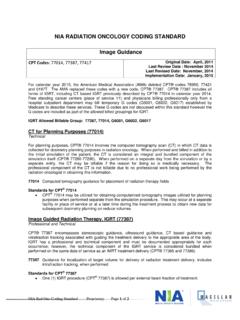
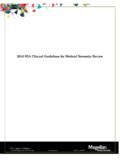
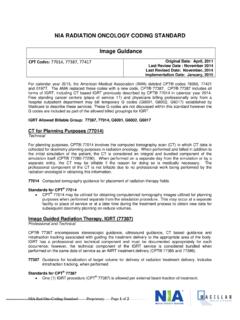
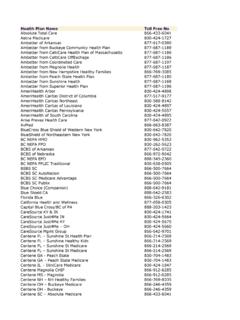
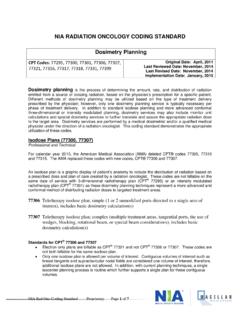
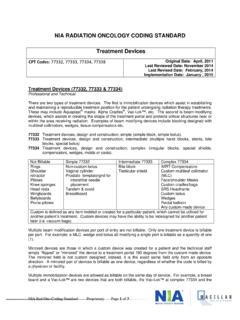
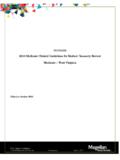
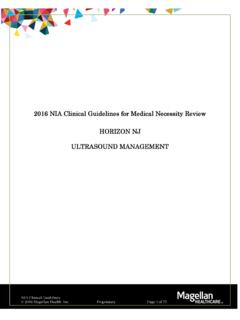
![Sleep Solution for [Health Plan] Members - RADMD-HOME](/cache/preview/f/e/0/e/6/2/1/8/thumb-fe0e6218ba49aea2ca3bc8bae4bee357.jpg)
